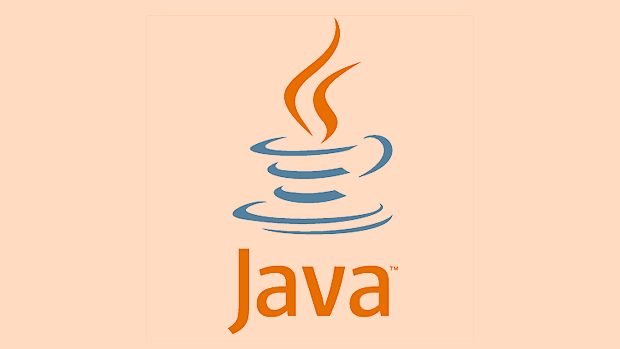The key to Java multi-threading programming is to understand thread creation, synchronization mechanism and resource management. 1. Threads are the basic unit of program execution. They can be created by implementing the Runnable interface or inheriting the Thread class; 2. Synchronized, wait/notify or ReentrantLock are required to control the execution order; 3. Avoid deadlocks, unified resource application order, set timeouts and reduce nested locks; 4. Using thread pools can improve performance. It is recommended that ExecutorService manage fixed, single-thread or cache pools. Mastering these core points can effectively deal with concurrent scenarios.

Java multi-threaded programming is actually not that mysterious, but it is indeed prone to errors. If you are new to multi-threading development, you may feel "Why are the threads running out of chaos?" and "Why are the locks not working?" at the beginning. Don't worry, this article will take you to sort out a few key points and give you more confidence when writing multi-threaded code.

What are threads in Java?
In Java, threads are the basic unit of program execution. Each Java program has at least one main thread (main thread), and the code you write is run in this thread by default.
If you want the program to do several things at the same time, such as downloading files while updating the progress bar, you need to use multi-threading.
There are two common ways to create threads:

- Inherit
Threadclass and overriderun()method - Implement the
Runnableinterface and pass it toThreadobject
For example:
class MyTask implements Runnable {
public void run() {
System.out.println("Task is running");
}
}
//Usage method Thread t = new Thread(new MyTask());
t.start(); // Note: Not calling run()Tip: Try to use
Runnableas much as possible instead of inheritingThread, because Java does not support multiple inheritance, and the implementation of interfaces is more flexible.
How to control the execution order of multiple threads?
Many times we hope that threads can work in a coordinated manner instead of doing their own things. This requires the use of some basic synchronization mechanisms.
Several common control methods include:
-
synchronizedkeyword: can be used to modify methods or code blocks, ensuring that only one thread executes a certain piece of code at the same time -
wait()/notify(): used for inter-thread communication, a thread waits for a certain condition to be met before continuing to execute. -
ReentrantLock: More flexible than synchronized, supports advanced features such as trying to add locks and timeouts
Let’s give a simple scenario: two threads print A and B alternately.
You can use synchronized with wait/notify , or use ReentrantLock Condition . The key is to understand who should execute first and who should wait.
Common misunderstandings: Many people think that as long as
synchronizedis added, everything will be fine, but if you do not pay attention to the scope and granularity of the object lock, concurrency problems may still occur.
How to avoid deadlocks?
Deadlock is one of the most troublesome problems in multi-threading. It usually happens when multiple threads are waiting for each other to release resources.
To avoid deadlocks, there are several practical suggestions:
- Unified resource application order : For example, threads take A first and then B first, and threads two also follow this order, which can reduce conflicts.
- Set the timeout mechanism : use
tryLock()instead of blocking directly, and give up if you can't get the lock for a while - Avoid nested locks : Try not to acquire another lock before it is released
For example:
Object lock1 = new Object();
Object lock2 = new Object();
// Thread 1
new Thread(() -> {
synchronized (lock1) {
synchronized (lock2) {
// do something
}
}
}).start();
// Thread 2
new Thread(() -> {
synchronized (lock2) {
synchronized (lock1) {
// Possible deadlock}
}
}).start();The above code may cause deadlock because the order of the locks is inconsistent.
What are the benefits of using thread pools?
Although it is simple to create threads manually, it is not recommended in actual projects. Frequently creating and destroying threads is resource-intensive. A better approach is to use thread pools.
Java provides the ExecutorService interface and Executors tool classes to manage thread pools. You can select different types of thread pools according to your needs:
- Fixed-size thread pool (
newFixedThreadPool): suitable for most concurrent scenarios - Single-thread pool (
newSingleThreadExecutor): Ensure task serial execution - Cache thread pool (
newCachedThreadPool): suitable for a large number of short-term asynchronous tasks
Example of usage:
ExecutorService executor = Executors.newFixedThreadPool(4);
executor.submit(() -> System.out.println("Task1"));
executor.shutdown(); // Remember to close itSmall details: You can use
submit()orexecute()to submit tasks. The difference is that the former can return the result (Future), while the latter cannot.
Multithreading is not difficult, but simple and easy to get into trouble. Mastering basic concepts, understanding common tool classes, understanding synchronization mechanisms, and using them in conjunction with thread pools, you can basically cope with most development scenarios.
The above is the detailed content of Java multithreading tutorial. For more information, please follow other related articles on the PHP Chinese website!

Hot AI Tools

Undress AI Tool
Undress images for free

Undresser.AI Undress
AI-powered app for creating realistic nude photos

AI Clothes Remover
Online AI tool for removing clothes from photos.

Clothoff.io
AI clothes remover

Video Face Swap
Swap faces in any video effortlessly with our completely free AI face swap tool!

Hot Article

Hot Tools

Notepad++7.3.1
Easy-to-use and free code editor

SublimeText3 Chinese version
Chinese version, very easy to use

Zend Studio 13.0.1
Powerful PHP integrated development environment

Dreamweaver CS6
Visual web development tools

SublimeText3 Mac version
God-level code editing software (SublimeText3)

Hot Topics
 Difference between HashMap and Hashtable?
Jun 24, 2025 pm 09:41 PM
Difference between HashMap and Hashtable?
Jun 24, 2025 pm 09:41 PM
The difference between HashMap and Hashtable is mainly reflected in thread safety, null value support and performance. 1. In terms of thread safety, Hashtable is thread-safe, and its methods are mostly synchronous methods, while HashMap does not perform synchronization processing, which is not thread-safe; 2. In terms of null value support, HashMap allows one null key and multiple null values, while Hashtable does not allow null keys or values, otherwise a NullPointerException will be thrown; 3. In terms of performance, HashMap is more efficient because there is no synchronization mechanism, and Hashtable has a low locking performance for each operation. It is recommended to use ConcurrentHashMap instead.
 Why do we need wrapper classes?
Jun 28, 2025 am 01:01 AM
Why do we need wrapper classes?
Jun 28, 2025 am 01:01 AM
Java uses wrapper classes because basic data types cannot directly participate in object-oriented operations, and object forms are often required in actual needs; 1. Collection classes can only store objects, such as Lists use automatic boxing to store numerical values; 2. Generics do not support basic types, and packaging classes must be used as type parameters; 3. Packaging classes can represent null values ??to distinguish unset or missing data; 4. Packaging classes provide practical methods such as string conversion to facilitate data parsing and processing, so in scenarios where these characteristics are needed, packaging classes are indispensable.
 How does JIT compiler optimize code?
Jun 24, 2025 pm 10:45 PM
How does JIT compiler optimize code?
Jun 24, 2025 pm 10:45 PM
The JIT compiler optimizes code through four methods: method inline, hot spot detection and compilation, type speculation and devirtualization, and redundant operation elimination. 1. Method inline reduces call overhead and inserts frequently called small methods directly into the call; 2. Hot spot detection and high-frequency code execution and centrally optimize it to save resources; 3. Type speculation collects runtime type information to achieve devirtualization calls, improving efficiency; 4. Redundant operations eliminate useless calculations and inspections based on operational data deletion, enhancing performance.
 What are static methods in interfaces?
Jun 24, 2025 pm 10:57 PM
What are static methods in interfaces?
Jun 24, 2025 pm 10:57 PM
StaticmethodsininterfaceswereintroducedinJava8toallowutilityfunctionswithintheinterfaceitself.BeforeJava8,suchfunctionsrequiredseparatehelperclasses,leadingtodisorganizedcode.Now,staticmethodsprovidethreekeybenefits:1)theyenableutilitymethodsdirectly
 What is an instance initializer block?
Jun 25, 2025 pm 12:21 PM
What is an instance initializer block?
Jun 25, 2025 pm 12:21 PM
Instance initialization blocks are used in Java to run initialization logic when creating objects, which are executed before the constructor. It is suitable for scenarios where multiple constructors share initialization code, complex field initialization, or anonymous class initialization scenarios. Unlike static initialization blocks, it is executed every time it is instantiated, while static initialization blocks only run once when the class is loaded.
 What is the `final` keyword for variables?
Jun 24, 2025 pm 07:29 PM
What is the `final` keyword for variables?
Jun 24, 2025 pm 07:29 PM
InJava,thefinalkeywordpreventsavariable’svaluefrombeingchangedafterassignment,butitsbehaviordiffersforprimitivesandobjectreferences.Forprimitivevariables,finalmakesthevalueconstant,asinfinalintMAX_SPEED=100;wherereassignmentcausesanerror.Forobjectref
 What is the Factory pattern?
Jun 24, 2025 pm 11:29 PM
What is the Factory pattern?
Jun 24, 2025 pm 11:29 PM
Factory mode is used to encapsulate object creation logic, making the code more flexible, easy to maintain, and loosely coupled. The core answer is: by centrally managing object creation logic, hiding implementation details, and supporting the creation of multiple related objects. The specific description is as follows: the factory mode handes object creation to a special factory class or method for processing, avoiding the use of newClass() directly; it is suitable for scenarios where multiple types of related objects are created, creation logic may change, and implementation details need to be hidden; for example, in the payment processor, Stripe, PayPal and other instances are created through factories; its implementation includes the object returned by the factory class based on input parameters, and all objects realize a common interface; common variants include simple factories, factory methods and abstract factories, which are suitable for different complexities.
 What is type casting?
Jun 24, 2025 pm 11:09 PM
What is type casting?
Jun 24, 2025 pm 11:09 PM
There are two types of conversion: implicit and explicit. 1. Implicit conversion occurs automatically, such as converting int to double; 2. Explicit conversion requires manual operation, such as using (int)myDouble. A case where type conversion is required includes processing user input, mathematical operations, or passing different types of values ??between functions. Issues that need to be noted are: turning floating-point numbers into integers will truncate the fractional part, turning large types into small types may lead to data loss, and some languages ??do not allow direct conversion of specific types. A proper understanding of language conversion rules helps avoid errors.







